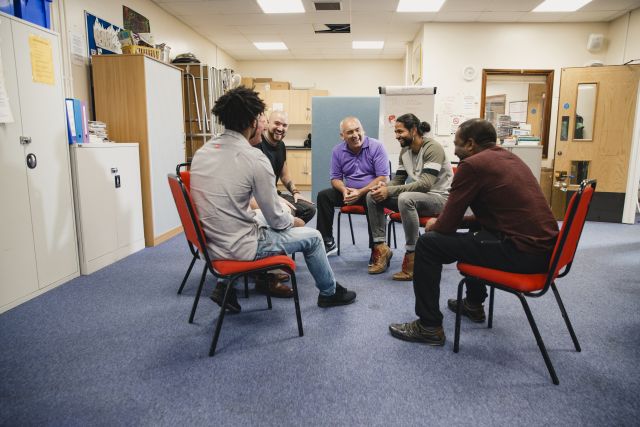Updated on October 23, 2024
Human immunodeficiency virus (HIV) is a chronic viral infection that can infect and destroy several different types of cells in the immune system.
If left untreated, the virus will weaken the immune system until the body can no longer fight off infections and disease—eventually leading to a condition known as acquired immunodeficiency syndrome (AIDS).
Without treatment, the majority of HIV infections are fatal, usually within 8 to 10 years. With treatment, a person with HIV can live a long and healthy life.
HIV is a serious public health issue—and one that disproportionately affects certain groups of Americans more than others.
What Americans are at a greater risk of HIV?
Anyone can become infected with HIV, but certain people in America are at a higher risk. This includes Black people, Hispanic/Latino people, and LGBTQ+ people. According to data from the Centers for Disease Control and Prevention (CDC) for 2022:
- Black people made up 12 percent of the country’s population but accounted for 37 percent of new infections.
- Hispanic/Latino people made up 18 percent of the country’s population but accounted for 33 percent of new infections.
- By comparison, White people made up 61 percent of the country’s population, but accounted for 24 percent of new infections.
Men who have sex with men (MSM) represent approximately 3 percent of the United States population, but they accounted for roughly 67 percent of new cases in 2022. Black and Latino gay and bisexual men are at the greatest risk.
- Black MSM accounted for 35 percent of new infections in 2022.
- Hispanic/Latino MSM accounted for 37 percent of new infections in 2022.
Transgender people also carry a disproportionate burden of HIV cases. Although only a fraction of a percent of the U.S. population identifies as transgender, 2 percent of new HIV infections in 2022 were among transgender people.
What’s being done to help
The reasons for these disparities are varied. Economic instability and a lack of social support play significant roles. Stigma around discussing HIV and related topics is another factor. Decreased access to HIV screening, other health care, and health education are additional factors. For example, many people lack reliable education about how sexually transmitted infections spread and who is at risk.
The U.S. government has recognized the higher burden of HIV and AIDS among communities of color and LGBTQ+ people, and they have outlined a plan of action in the Ending the HIV Epidemic in the U.S. campaign.
The four key strategies of the federal plan are:
Diagnose all people with HIV as soon as possible
Early detection is crucial to successful treatment and preventing the spread of HIV. Federal and local agencies are working to increase access to testing, especially in at-risk communities. As an individual, you can encourage friends and loved ones to get tested. Encouragement from peers is an effective strategy to increase testing.
Treat people with HIV rapidly and effectively
HIV medications need to be started as early as possible. There are an estimated 250,000 people in the U.S. who are aware of their HIV infection but are not receiving any treatment. Bringing this number down requires greater engagement from both the medical community and the community at large. If you know someone who has HIV, encourage them to seek treatment and stick with treatment.
Prevent new HIV transmissions
In addition to traditional safe-sex practices (such as condoms), there is a medication that can reduce a person’s risk of contracting HIV. This medication is called pre-exposure prophylaxis (PrEP) and is taken as a pill. The federal government and pharmaceutical companies have worked to make PrEP available at no cost or at a discounted cost. Unfortunately, fewer than 25 percent of people at high risk of HIV infection take PrEP.
Respond quickly to HIV outbreaks
New scientific methods can chart where HIV is spreading rapidly. Identifying where and when HIV is spreading can guide resources to at-risk and underserved communities where they can do the most good.
Great strides have been made in the fight against HIV, but this progress has yet to reach many of those who need it most. Consider sharing this article with others. It can help spread awareness about HIV, and it may even encourage someone to get tested or seek treatment.






